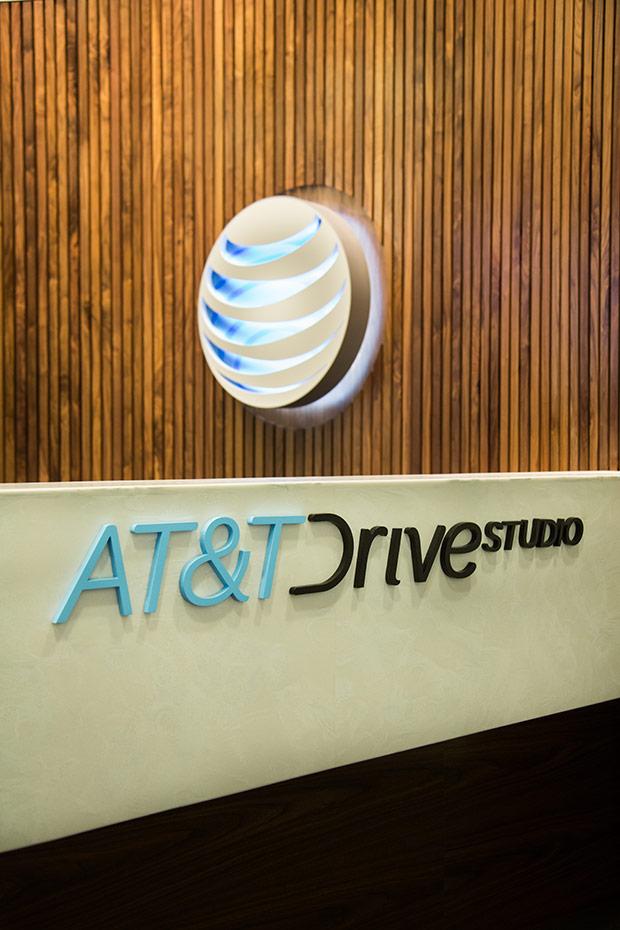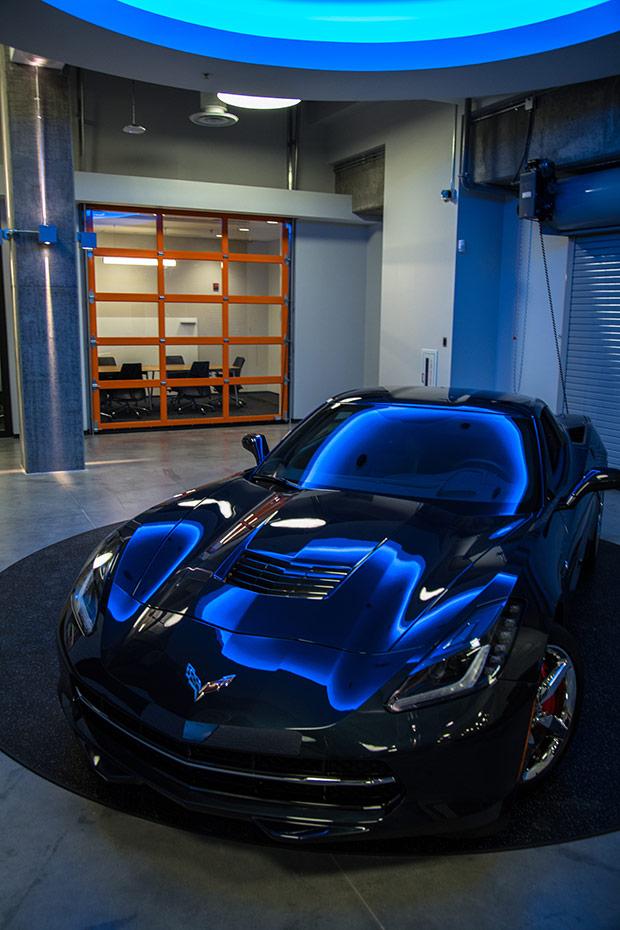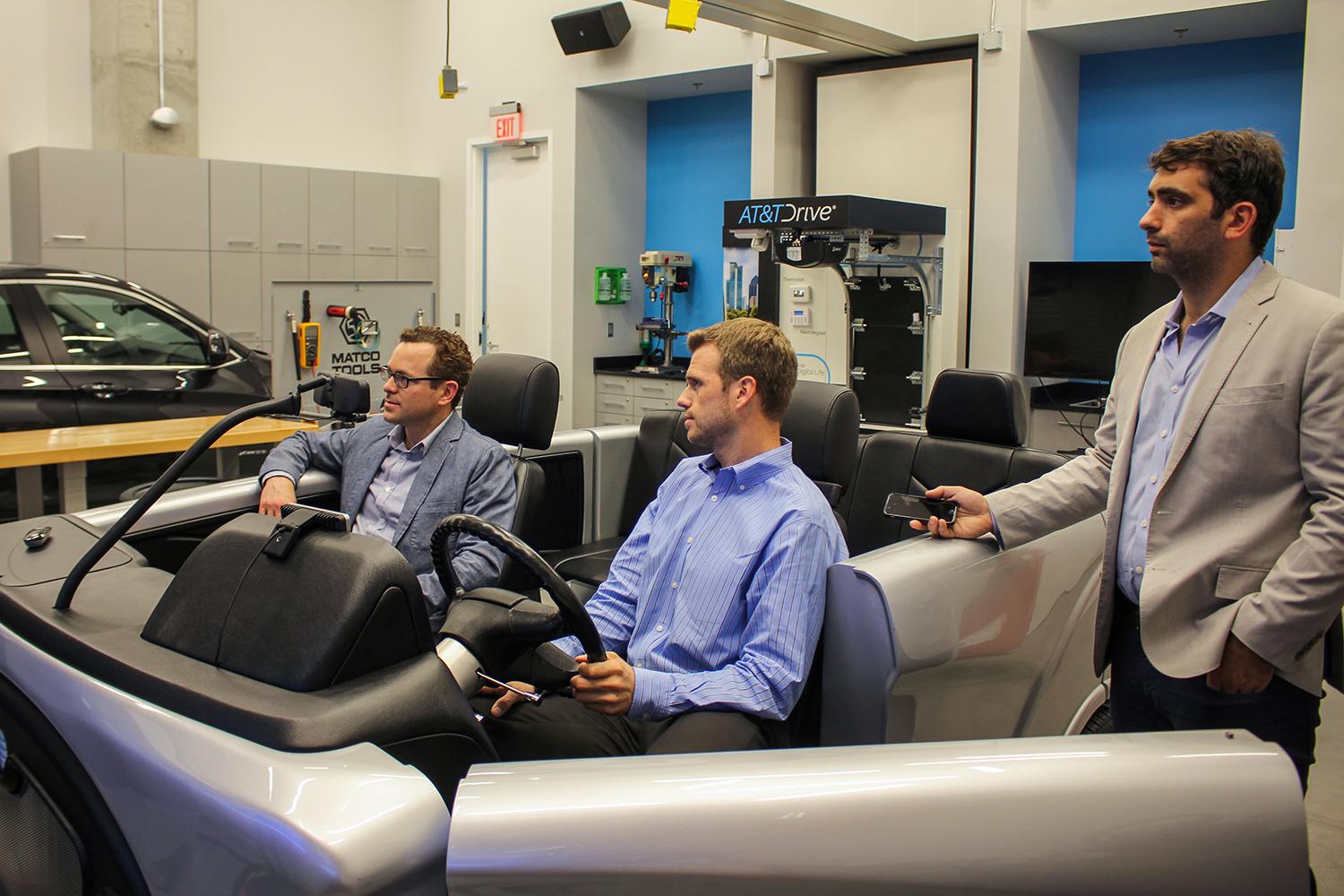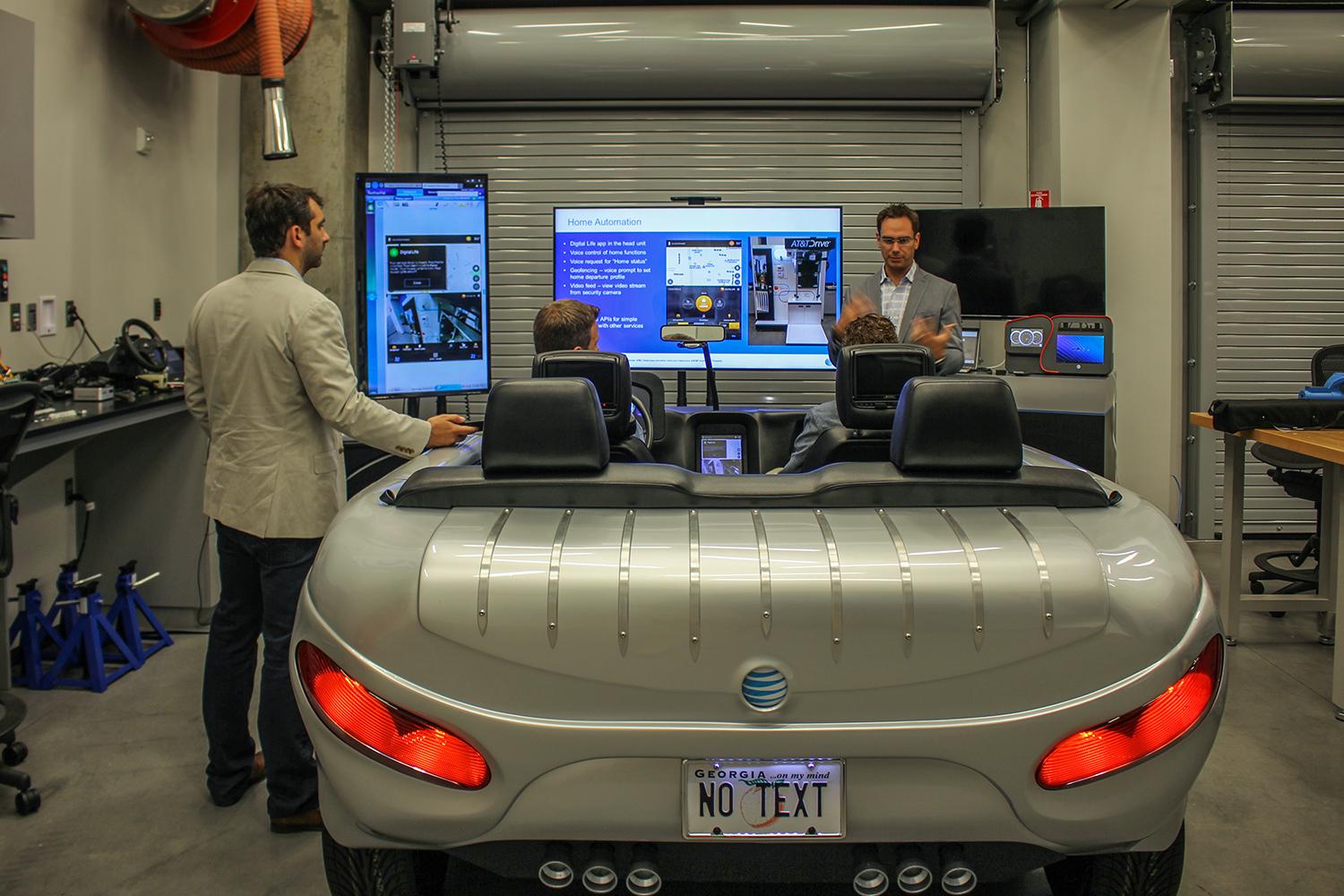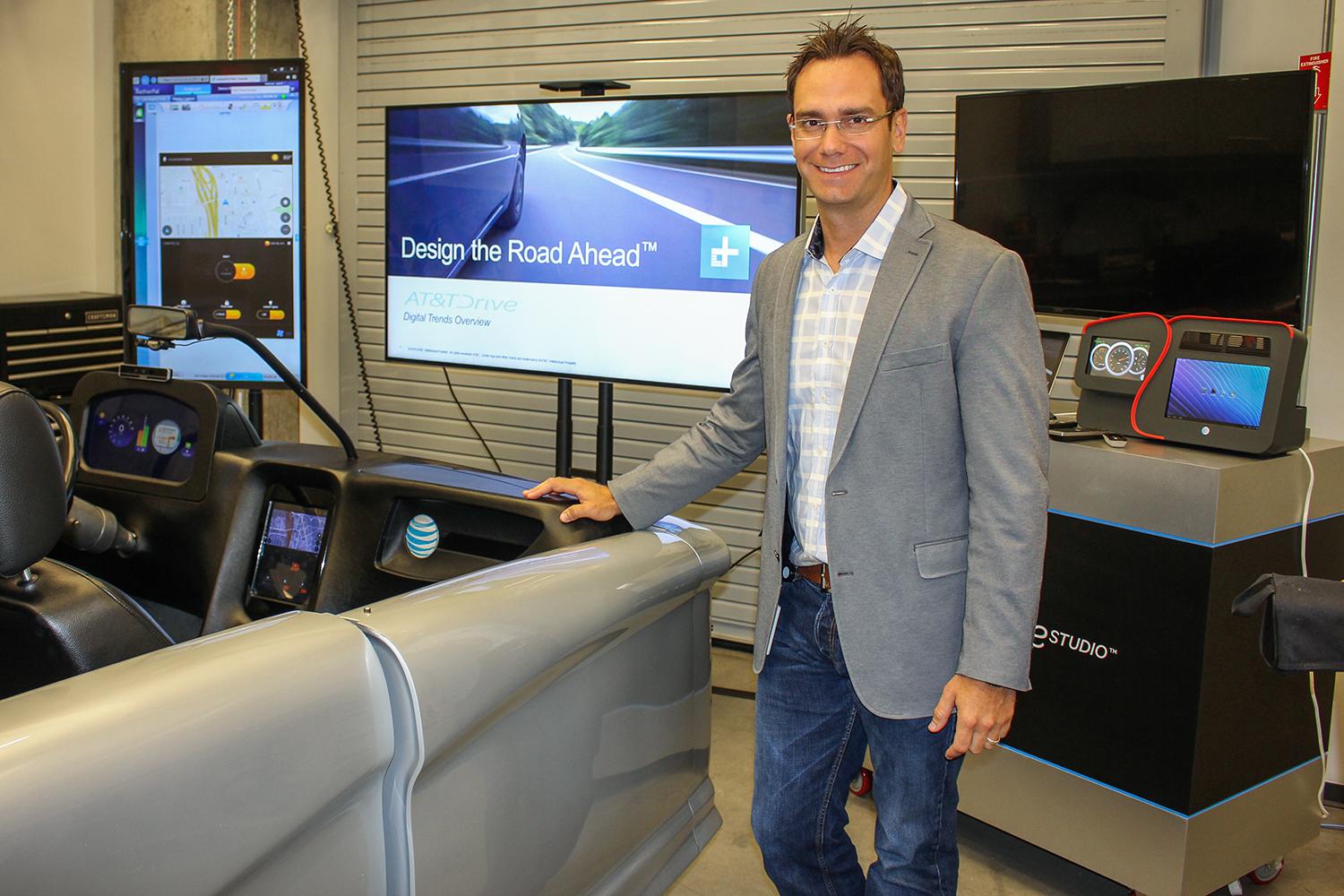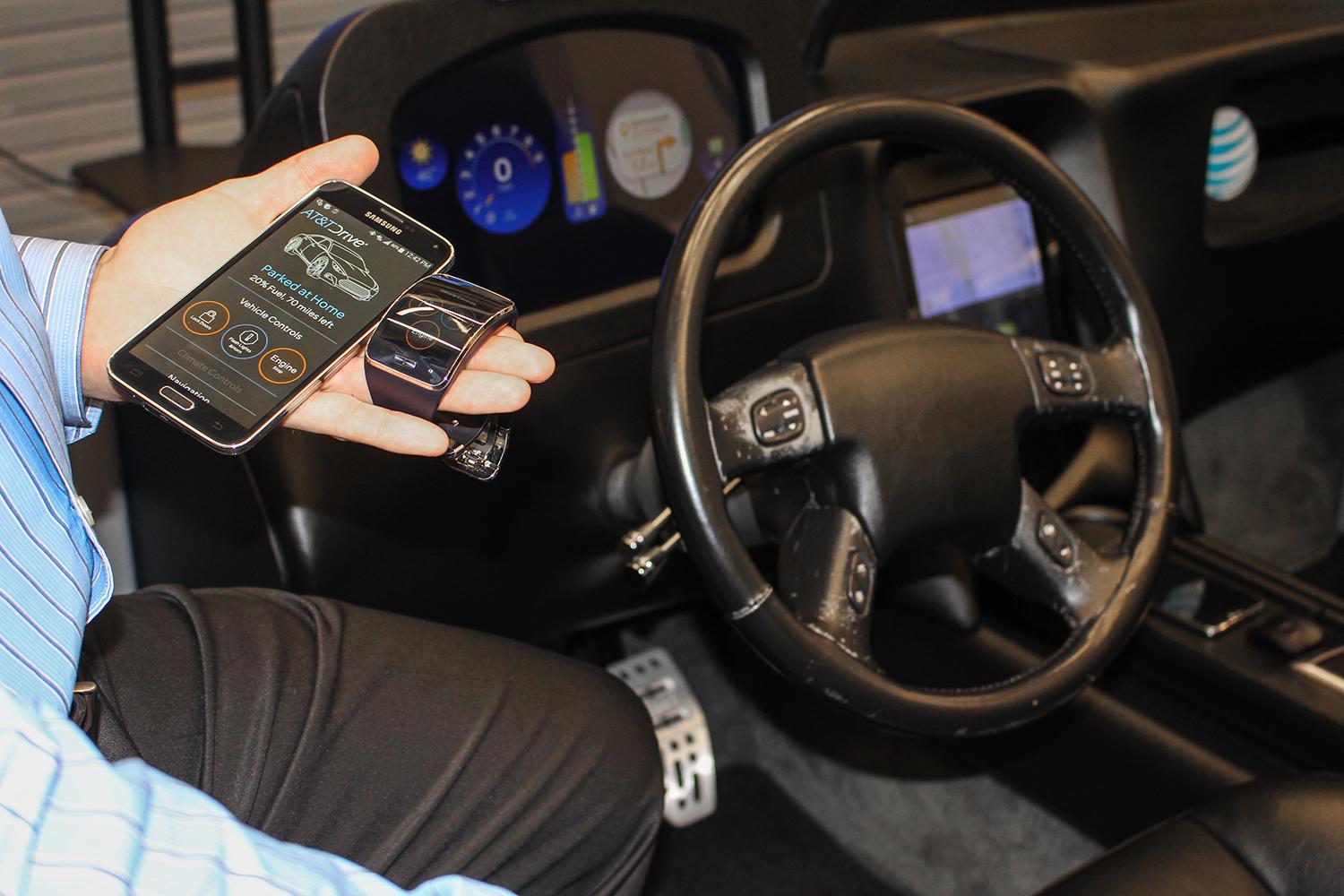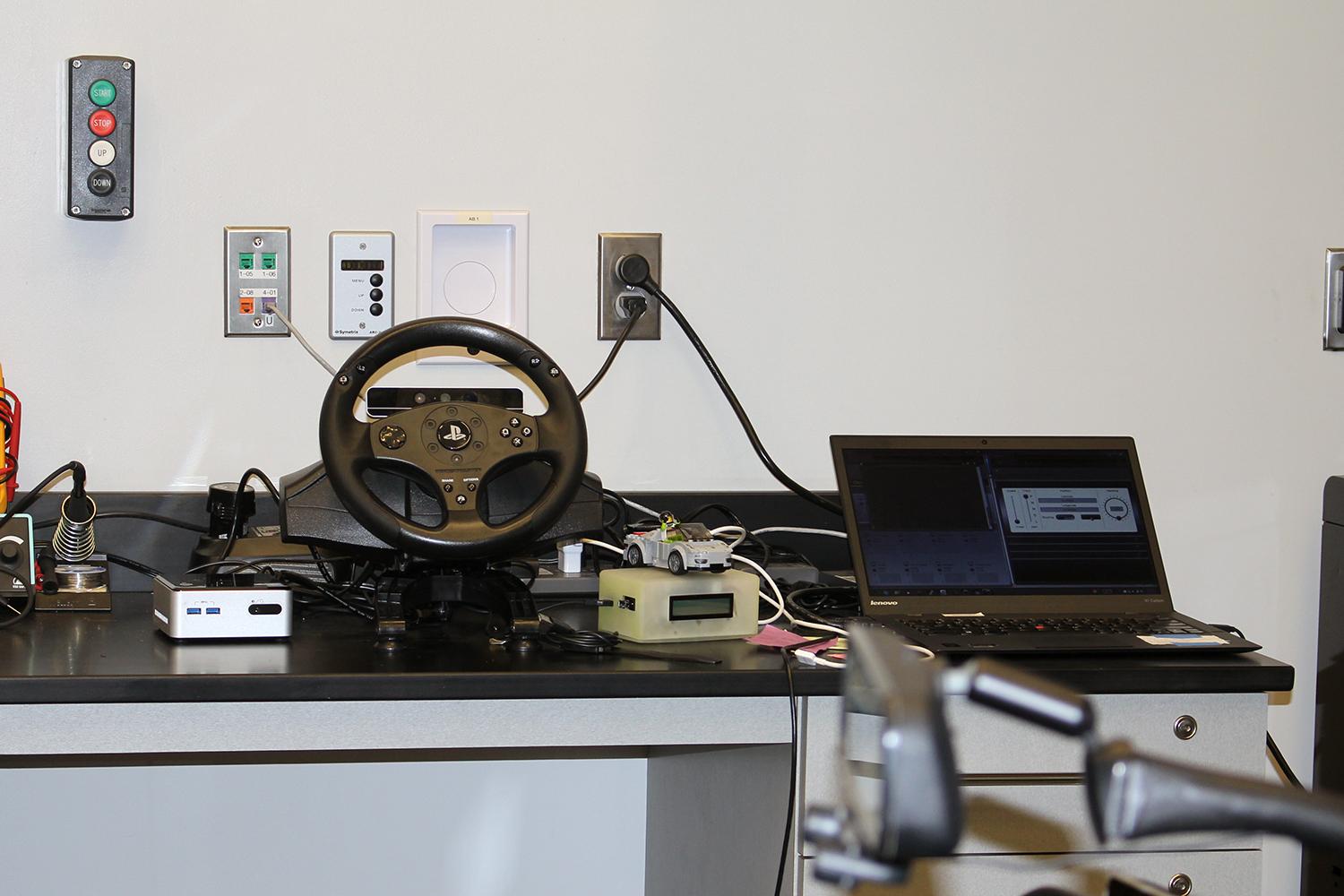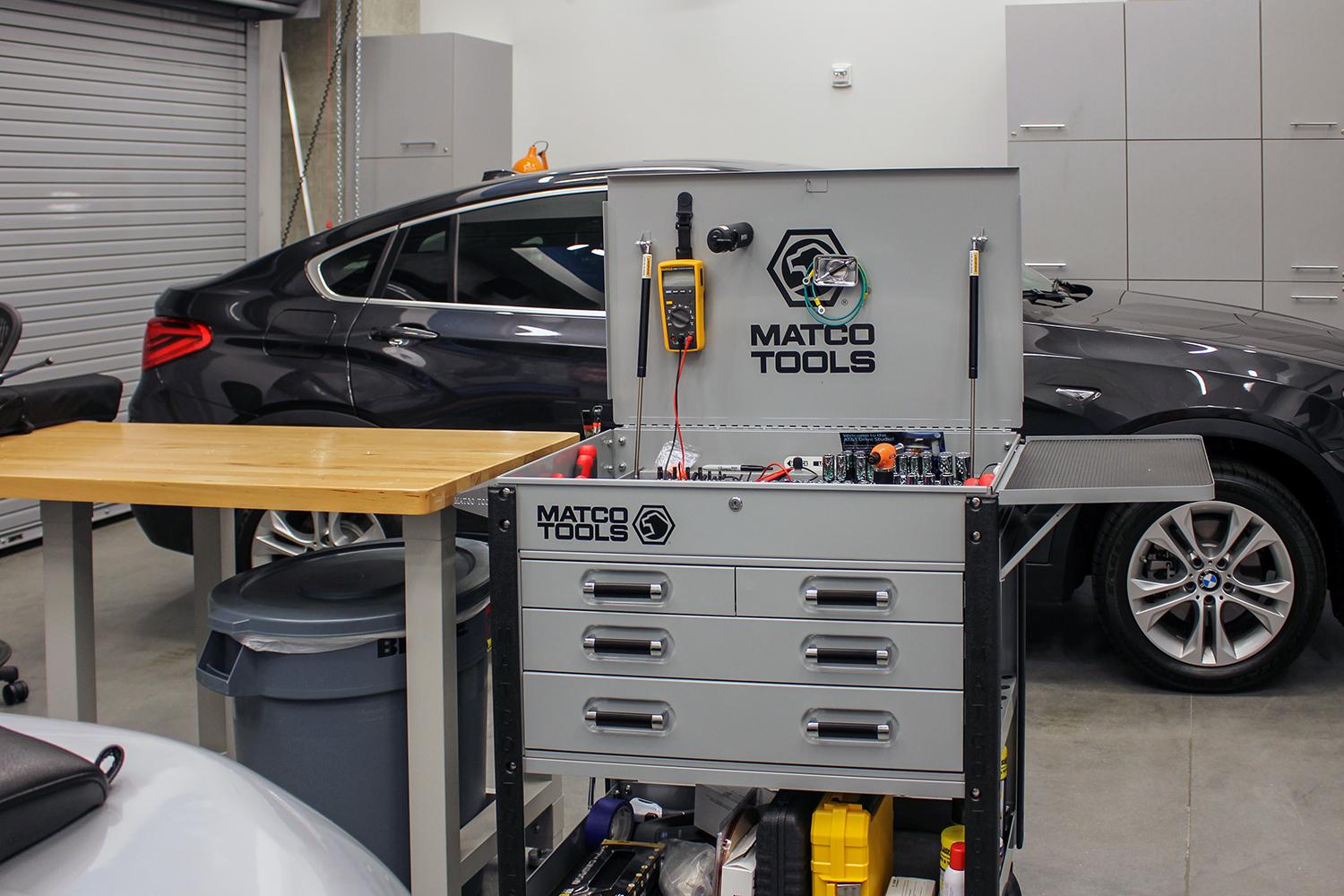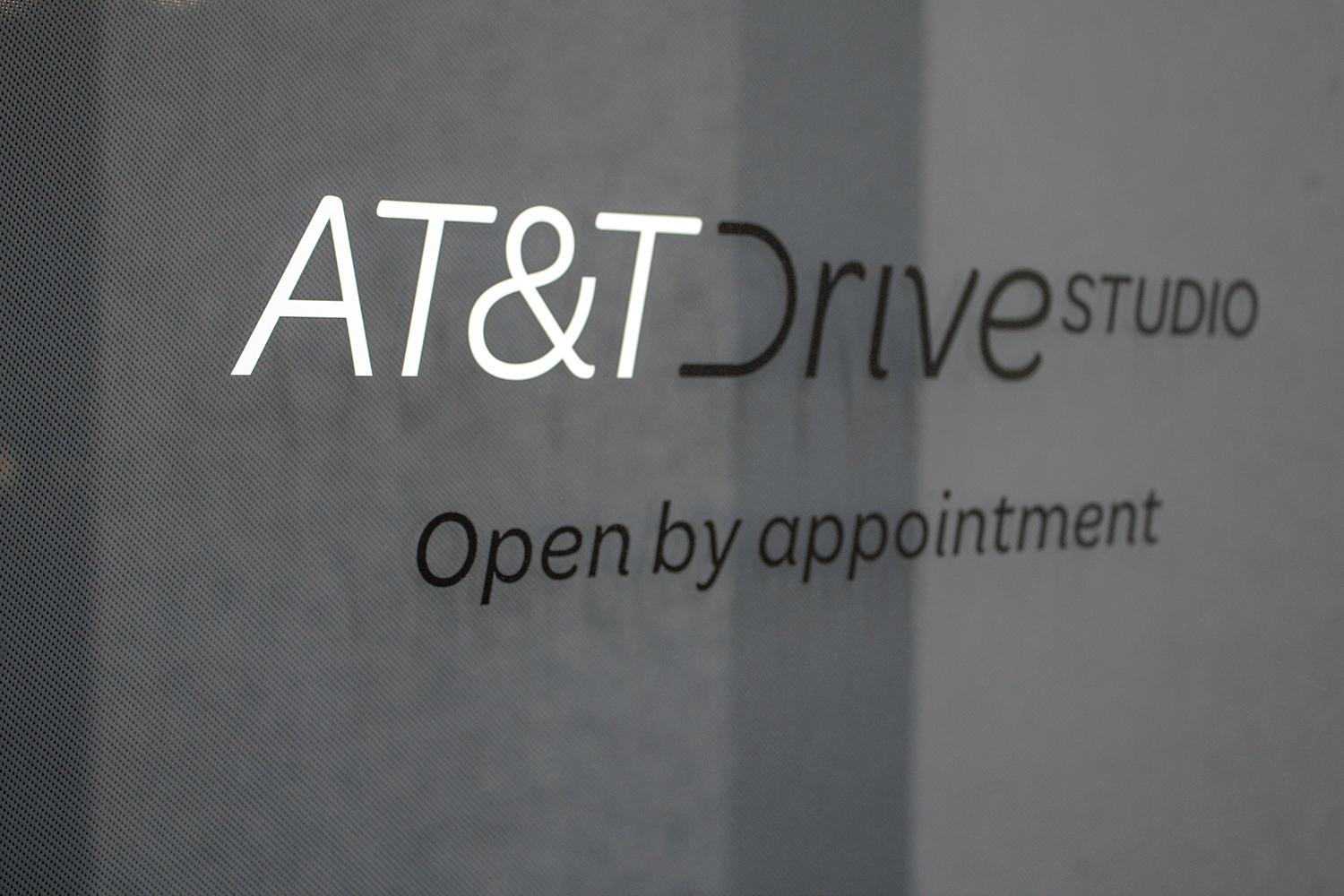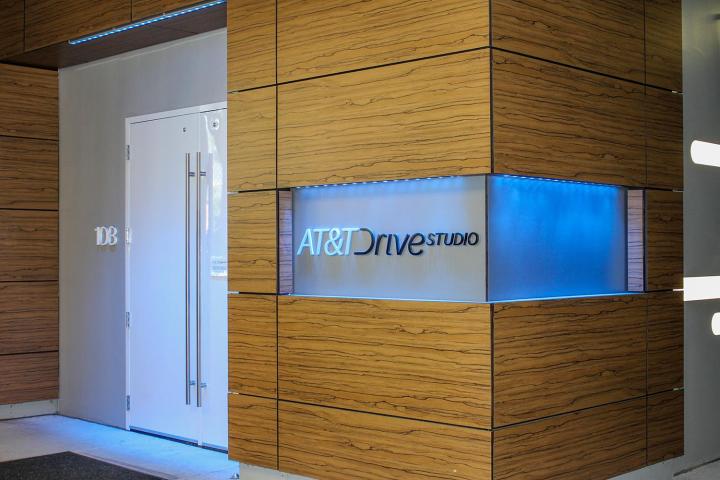
Downtown Atlanta hides a secret, inside an old parking garage, squat concrete legs and all.
Leave your car there, between the scuffed yellow lines and oil stains on the ordinary parking surface, let your eyes adjust a bit to the dark, and you’ll see a frosted glass door. Ring the bell.
Behind it may lie the future of the automobile.
You see, cars today have a problem. Despite the small improvements we’ve all drooled over in recent years — self-parking, auto-lane detection, built-in navigation systems that know where traffic lives — nearly every car on the road today is still dumb. Really dumb. Cars today are where most phones were before the iPhone came along. And like the phone industry in 2006, the auto industry is ripe for change. That’s why every major tech brand in the world is kicking the tires — the actual tires — and hoping it can transform the car.
Cars today are where most phones were before the iPhone came along.
AT&T aims to power all of those efforts, from Google and Nvidia to Microsoft and Apple. No one can make your current dumbcar smart, but they hope to ensure that your next car won’t need after-school classes.
“The future of the connected car is going to be amazing. And the AT&T Drive Studio is where we will reinvent and reimagine the car of tomorrow,” says Ralph de la Vega, president and CEO of AT&T.
Into the Garage
Last January AT&T transformed a 5,000-square-foot parking garage into the Drive Studio, a working lab for the company’s researchers, designers, and engineers to develop and test new smartcar technologies, and showcase what it hopes will soon be cutting edge.
Despite de la Vega’s bold promises, much of what we saw in a private tour of the studio on a hot day in June sounds ordinary, at least to anyone with a smartphone built in the past five years. Voice control? Location awareness? Apps that talk to each other? An update function, for god’s sake? But for cars, it’s a sea change. Remember when I said that cars today are dumb? Like really dumb?
“Five years down the road your car will have improvements on it that it didn’t when it left the dealership. And that’s not typical to the automotive industry right now,” explained Brian Greaves, director of product development and emerging devices for AT&T, and head of the company’s Drive Studio.
It sounds like a small thing, in an era when cell phone apps update on a daily basis and the latest build of Android or iOS is just a click away. But it’s a paradigm shift for the auto industry.
No phone needed
The “head unit” in your car – the thing in the dash that maybe holds a screen and runs some apps – is controlled by your car company, jealously guarded and rarely if ever updated. Hoping it will add Spotify or Tidal, or any of a thousand competing apps that might improve your ride? Dream on.
“The automotive industry is not ready for a thousand applications in that head unit,” Greaves told Digital Trends. Having spent eight years at GM’s OnStar, he has a pretty decent handle on what car makers are willing to handle. “Give them 10 or 20 applications that work rock solid and are completely integrated? That’s what consumers really want [anyway]. We’re trying to push the industry toward adopting these things.”
“Five years down the road your car will have improvements on it that it didn’t when it left the dealership.”
Those other brands pushing their way into your car, including Microsoft and Google and Apple, also have a vision for your car. AT&T embraces them all, the company claims, and offers a unique value-add to further enhance those platforms: that 4G LTE network it touts in all of those commercials. The company aims to build networking directly into autos, unlike CarPlay or Android Auto, which add familiar smartphone features by sucking the apps and networking features from your
“With these cars being connected and having an embedded module in them, not a tethered approach, we can now connect to the car anytime,” Greaves says. “We can pull diagnostics data, we can remotely start and stop these vehicles from anywhere.”
“My car’s in California. I can hit that button right now and it’ll start.”
AT&T claims its nationwide 4G wireless network is uniquely positioned to keep your car online wherever you are. Verizon offers a similar claim, through the company’s In-Drive offering, and partnerships with Mercedes and VW. Verizon recently announced a module that will plug into any existing car to offer OnStar like functionality, a device it calls Connected Car — essentially sidestepping the manufacturers themselves. The wisdom of this move remains to be seen.
A remedial class for your dumbcar
The ability to start a car from a smartphone is one of the most requested features GM gets, Greaves says. “We built it into the wearable devices … and we know it’s only a matter of time until everybody’s going to want that kind of information on their wearable device.”
It’s one of the biggest areas AT&T is working on, he said. Again, it sounds simple. But consumers are used to such a poor experience that most simply throw their hands up in disgust when even the most basic features fail to work as expected.
“With a majority of customers, I mean a vast majority of them, they’ll try to Bluetooth-pair their phones for one or two days. If they have issues they’ll never try again. For the lifetime of their vehicles,” Greaves says. It sounds silly, but it’s the reality. Given a system that just works out of the box, consumers can start to expect more. He describes a cloud-based system with different profiles for different drivers, making it easy to switch favorite radio stations, contacts, and so on. It works by punching in a code, but it could be biometric-based or profiles could switch based on a voiceprint. Car makers can even build authentication into door handles or the key fobs themselves.
“Every manufacturer has a different idea. Some are looking at retinal scanners. Everybody’s trying different things.”
Car makers can even build authentication into door handles or the key fobs themselves.
Beyond that, the company is honing a collection of apps that car makers can roll out that will supply some of the features you’d expect a car of the future to supply. Take for example this idyllic scenario, as described by Greaves: a lengthy road trip from Atlanta to Detroit. (I know, good times, right?) Five hours before you hit your destination, you ask your car to find you a parking spot. Knowing the traffic conditions, and knowing the weather, your car suggests a covered parking spot to protect you from the snow you’ll encounter at the end of your journey. Those type of smarts require several apps to work in concert, including navigation, weather, and a parking-spot finder.
“You want the system to be intelligent enough to know, hey, it’s not snowing now in Detroit, but in five hours it will be. That’s what we’re demonstrating with AT&T Drive.”
In the Studio
Russell Vegh, also with the Drive Studio and sitting in a cut-off car mock up that lacks an engine — and an entire front-end, to be clear — walked us through a more specific example.
“What’s the weather?” Vegh asked. “It’s 89 with lots of sunshine today,” a female voice responded. That’s without opening a special app or switching focus to the weather app. The car is ready, listening, waiting to offer information or transport. It’s running speech recognition and analysis in the cloud, just like Siri or Google Voice. In our demo, it wasn’t optimized, Greaves explained: We were in Atlanta, but the voice data was being transmitted to Washington state via New Jersey, adding a lag that would give you time to strangle a cat — the challenges of lab-testing versus real-world scenarios.
“How about San Francisco?” he followed up, showing that the speech software is context sensitive. It’s what we’ve come to expect from our cellular phones, but the experience is a far cry from car computing of today. Just try asking your car now if you’ll need an umbrella later today.
Connected cars should go beyond that, Vegh offered, such as the ability (when safe) to view connected cameras in your home, for example.
“Home automation is a huge area of interest for auto manufacturers, who are saying ‘how can you tie in … home security services?’” AT&T answered that with recent integration into its Digital Life platform, the company’s answer to ADP; an app in the car lets you adjust the HVAC system, open and close a garage door, or turn on the floodlights over the garage.
Kicking and screaming, the telecom giant may be the one to bring car companies into the 21st century.
Voice authentication is included as well, of course. And you can automate the system through geo-fencing: Drive within five miles of the house and the system will turn the heat to 70 degrees. A block away and it opens the garage and turns on the lights. Or lets you know when you cross a two-mile line that you forgot to close the garage door. Do you want to do it now? Would you like your car to do it for you?
Kicking and screaming, the telecom giant may be the one to bring car companies into the 21st century. AT&T has deals with eight automakers at present: GM, Ford, Nissan, BMW, Volvo, Subaru, Audi, and Tesla. The Drive Studio sits across the street from Georgia Tech, and it has partnerships with many leading tech companies to make this technology happen.
Ericsson helps bring cloud services to the car, redbend facilitates over the air firmware updates, TCS adds navigation, VoiceBox Technologies supplies speech recognition. The Audi A3 was the first LTE connected vehicle in the world, thanks to AT&T, and GM was first to standardize 4G LTE across all cars, trucks, and SUVs.
The future clearly holds even more dramatic changes for cars. Semi-autonomous or even fully autonomous rides that take you from your driveway to the shopping mall and back without you touching the gas or steering wheel. But that’s not likely to happen in the near term. For now, the best you can hope for is an improvement to your dumbcar. Will AT&T take us there?
Editors' Recommendations
- This $3 USB adapter fixed all of my Apple CarPlay connection problems
- Amazon Music now has a car mode, but don’t use it while driving
- How tech is making trucks comfier, smoother, and better for everyday drivers
- These age brackets admit to the most distracted driving
